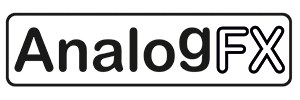Showing posts sorted by date for query Gear. Sort by relevance Show all posts
Showing posts sorted by date for query Gear. Sort by relevance Show all posts
Sunday, November 30, 2025
Cosmolab: Rapid audio hardware prototyping #faselunare
video upload by Floyd Steinberg
"The #cosmolab by #faselunare ( https://sndmt.link/cosmolab-fs ), based on the #daisyseed #mpu, is a development board for audio projects: synthesizers, effects pedals, sequencers, modular gear, samplers, groove boxes - whatever you can think of. In this video, I walk through the functions and features and create a mod reverb with this board.
Table of contents:
00:00 the problem to the solution
00:37 hi, what is this?
00:58 hardware overview
02:18 how to use: installing the examples
03:21 examples: euklidean drums
03:38 pluck echo
04:40 music box
05:18 physical modeling synth (strings)
05:49 single oscillator poly synth
06:14 the development environment
06:38 or use plugdata
07:23 creating and compiling a mod reverb effect
09:33 sound demo for my mod reverb effect
10:47 conclusion
11:20 liKE ANd sUBscrIBe
Links:
Web page: https://sndmt.link/cosmolab-fs
Plugdata: https://plugdata.org/
HÄLP ZIS CHANNEL
https://www.patreon.com/floyd_steinberg
https://floydsteinberg.gumroad.com/
https://floydsteinberg.bandcamp.com/"
CONDUCTIVE LABS NDLR DESKTOP SEQUENCER
Note: links to listings are affiliate links for which the site may be compensated.
via this listing
Additional Signal Sounds listings
"A pre-owned Conductive Labs NDLR in good condition. It comes with original packaging and accessories.
Manufacturer's description
A MIDI Four-track, Sequenced Arpeggiator, Chord and Drone Player
We’ve turned complex music theory into a killer synthesizer jamming MIDI controller. With four parts that can play up to 8 synths, you can make fantastic electronic music, such as soundscapes, electronica, ambient, electro, or techno to name a few. Whether noodling in your music space after work or jamming with friends, The NDLR can take your music to amazing places!
Press one of the seven chord buttons, and the two arpeggiators and drone follow the chord notes while your polyphonic synth sings with pads.
There are start and stop buttons for each of the four parts, and a button to start/stop all parts. And there’s a “panic” button to stop all MIDI notes.
via this listing
Additional Signal Sounds listings
"A pre-owned Conductive Labs NDLR in good condition. It comes with original packaging and accessories.
Manufacturer's description
A MIDI Four-track, Sequenced Arpeggiator, Chord and Drone Player
We’ve turned complex music theory into a killer synthesizer jamming MIDI controller. With four parts that can play up to 8 synths, you can make fantastic electronic music, such as soundscapes, electronica, ambient, electro, or techno to name a few. Whether noodling in your music space after work or jamming with friends, The NDLR can take your music to amazing places!
Press one of the seven chord buttons, and the two arpeggiators and drone follow the chord notes while your polyphonic synth sings with pads.
There are start and stop buttons for each of the four parts, and a button to start/stop all parts. And there’s a “panic” button to stop all MIDI notes.
Friday, November 28, 2025
Skybound - full album | rhythmic dark ambient performance with analog synthesizers
video upload by Caught In Joy
"Skybound drifts into a darker side of analog ambient — long shadows, slow-moving bass clouds, quiet tension, and melodic fragments floating through the darkness. It’s deeper, heavier, and more atmospheric than my usual bright, drifting releases… but still gentle, still spacious, still grounded in the warmth of live analog instruments.
If you enjoy immersive night listening, dim-light focus, or slow emotional reset sessions, this one should land well.
Over 1 hour 20 minutes Bandcamp 24-bit / 48 kHz download extended version: https://caughtinjoy.bandcamp.com/
Tracklist:
00:00 - Ascender
23:53 - Nighjet
33:18 - Skybound
🎛 Gear Used
Moog One • Moog Matriarch • Moog Model D • Prophet-10 • TEAC 80-8 • RME UFX+ • SSL MADI AX"
Get *more* from your semi-modular synths with this gear
video upload by Oscillator Sink
"Links to companies featured:
https://dfaudio.com.au/
https://www.feed-me-synthesis.co.uk/
https://www.herzlichlabs.com/
https://tiptopaudio.com/stackcable/
https://www.st-modular.de/workmates
Semi-modular synths are great, and even with a sizable eurorack set-up I find myself gravitating to these complete, self-contained instruments more and more, to get the enjoyment of patching without the option paralysis that a full modular synth sometimes inspires.
Nevertheless the big benefit that a full modular set-up gives you is that expandability and flexibility to build out what your setup is capable of by adding or swapping out modules.
But semi-modular lovers need not feel left out! There are numerous bits of kit out there which can help you get more from your semi-modular synths, expanding their capabilities and sonic palettes.
Transparency notice: The DF Audio Nano-U was kindly provided to me by DF Audio for the purposes of featuring it in some videos and I am permitted to keep it. The Slewp and Slide has been kindly lent to me by Feed Me Synthesis for the purposes of featuring it in this video.
Chapters
00:00 Intro
01:15 Tiptop Stackcables
04:52 The World of 0HP Utilities
14:15 Herzlich Labs MMI Node
16:55 DF Audio Nano-U
26:07 Feed Me Synthesis Slewp and Slide
38:06 Outro
http://www.oscillatorsink.com"
Wednesday, November 26, 2025
Hijack USB-C to power any Synth or Pedal with Step Up!
video upload by myVolts
"Luke Brennan, MD at myVolts giving a demonstration of our new Step Up USB-C power adapters can power a Chase Bliss pedal or a Digitakt Synth from just a standard USB Cable.
With a background in power adapters, myVolts have developed a range of solutions so you can power your synths, pedals, AV gear and more with USB. You can even power items that were previously powered by batteries.
The Silent Alchemist is an Isolated USB power hub, that allow you to do that without the buzz and humm usually associated with USB power.
In this video, he talks of how Step Up, a USB-C solution. With our 'Power My Gear' free webtool, you can plan out your USB power setup easily.
Silent Alchemist here: https://myvolts.com/silentalchemist
Step Up USB-C to DC here: https://myvolts.com/StepUpPower
Power My Gear tool here: https://myvolts.com/powermygear/
#usbpower #pedals #synths #synthesizer #digitakt #elektron #myvolts #greendesign #innovation #pedalsandeffects #pedalboard #chasebliss #pedals"
Tuesday, November 25, 2025
ERICA SYNTHS HEXDRUMS 06 // LØSTLVLS
video upload by LØSTLVLS
"A bit of 164bpm drum 'n' bass breakbeat action, Erica Synths HexDrums style! Yep, that's Amen Break samples you're hearing, uploaded to the Crash/Ride voices. :D
Check out my sample packs on Bandcamp - loads of vintage and modern gear (leaning towards drum machines) with kits, sample chains and presets. All ethically-sourced and locally-grown here in the lab in Bristol, UK: https://lostlvls.bandcamp.com/"
Monday, November 24, 2025
Bach meets Stranger Things: Pianoteq 9 as a synthesizer (jam)
video upload by Pete Midi
"Pianoteq 9 has arrived and it’s time to show you my favourite virtual instrument together with my favourite plugin controller in a little jam. Yes, and I also like Stranger Things and as the end approaches now, I’m currently rewatching all the seasons 😉
Gear: Modartt Pianoteq 9 Pro with Ableton Live 11 and MP MIDI Controller, drums from Forever 89 VISCO."
Friday, November 21, 2025
Kloob - Cosmic Tribe
video upload by - Kloob -
"Putting the wonderful Eventide Space reverb pedal through its paces!!!
I am getting closer and closer to having the right gear to share my music beyond my studio. :)
Akai MPC One: my own samples.
Micromonsta: pad played in realtime.
Behringer Edge: Drum / Bass pattern.
FX: Eventide Space.
Hope you like it!
Thanks for support my music!
Cheers,
Dani
kloob.bandcamp.com"
Roland SH-2 Analog Synthesizer SN 034024
Note: links to listings are affiliate links for which the site may be compensated.
via this Reverb listing
"Roland SH-2 Analog Synthesizer (1979) w/ Original Gig Bag included for free!
I’m pricing it lower than usual for a quick sale due to an unexpected expense. No issues with the synth — just need to move it quickly.
It’s in good condition, fully functional, and sounds amazing — rich, fat bass and creamy leads that only real analog gear can deliver.
Cosmetically, there are some normal signs of age, but everything works as it should — all keys, sliders, and switches respond perfectly.
The SH-2 is a simple layout, huge sound, and built like a tank."
via this Reverb listing
"Roland SH-2 Analog Synthesizer (1979) w/ Original Gig Bag included for free!
I’m pricing it lower than usual for a quick sale due to an unexpected expense. No issues with the synth — just need to move it quickly.
It’s in good condition, fully functional, and sounds amazing — rich, fat bass and creamy leads that only real analog gear can deliver.
Cosmetically, there are some normal signs of age, but everything works as it should — all keys, sliders, and switches respond perfectly.
The SH-2 is a simple layout, huge sound, and built like a tank."
Symphony 128 S64 RAM Cartridge w/ Case & Instructions / Manual
Note: links to listings are affiliate links for which the site may be compensated.
via this eBay listing, also on Reverb
"Symphony 128 S64 RAM cartridge with original case and documentation from the 1980’s. User serviceable button battery installed in the past year, this unit is 100% functional and operates as expected. Used in a studio setting on a Roland Alpha Juno 2 and will work on other Roland gear, see below for list. From a smoke free environment. Hard to find, it’s the equivalent of having four standard Roland M64-C RAM cards installed at once! Memory Backup for Roland Products: Alpha Juno 2, GR-700, GR-77B, MKS-10, MKS-20, MKS-30, MKS-70, MKS-80, TR-707, TR-727, TR-909, JX-3P, JX-8P, JX-10"
via this eBay listing, also on Reverb
"Symphony 128 S64 RAM cartridge with original case and documentation from the 1980’s. User serviceable button battery installed in the past year, this unit is 100% functional and operates as expected. Used in a studio setting on a Roland Alpha Juno 2 and will work on other Roland gear, see below for list. From a smoke free environment. Hard to find, it’s the equivalent of having four standard Roland M64-C RAM cards installed at once! Memory Backup for Roland Products: Alpha Juno 2, GR-700, GR-77B, MKS-10, MKS-20, MKS-30, MKS-70, MKS-80, TR-707, TR-727, TR-909, JX-3P, JX-8P, JX-10"
Bad Gear - This Time it's PERSONAL
video upload by AudioPilz
"Welcome to Bad Gear, the show about the world’s most-hated audio tools. There is no shortage of synth manufacturers offering costly top-shelf instruments: PolyBrutes, UDOs, all the old stuff but new and even Roland started channeling their inner Teenage Engineering.
Today, however, we are going to talk about Nord Modular. This range of digital high-end modular synths was introduced in 1998 and not only is there no modern successor in sight, they also made it incredibly hard to use the originals properly. This time it’s personal!
Chapters:
00:00 Intro tune
00:56 Overview Nord Modular G1
01:12 The Nord Modular Range
01:17 The Concept, UI, Computer Integration
01:43 The Software Editor Situation
02:00 Freeware Editor ( Byte Order )
02:16 The Modules ( Oscillators, Drums, FM )
02:54 Generative Patches vs. Normal Synth Duties
03:04 Filters
03:40 Modulators
04:08 Using it as a Groovebox ( Clock Generator, Sequencers )
04:43 Effects (or lack thereof)
05:09 Features for Keyboardists
05:26 Even more weird Features
05:44 What else??? (Connectivity, Pricing,...)
06:10 H*te Screen
06:35 Jam 1 ( Techno Groovebox Patch )
07:29 Jam 2 ( Many, Many Patches Jam )
08:34 Finale ( 90s Psytrance )
08:46 VERDICT"
Thursday, November 20, 2025
Aphex Twin - Flim (Cover) | Arturia Minifreak
video upload by MunomaMusic
"Aphex Twin's Flim
Gear:
Arturia Minifreak
Arturia Minifuse 4
Software:
Ableton Live"
Roland VP-330 ~ The Iconic String & Choir Synth From Vangelis
video upload by RetroSound
"(c)2007-25 by RetroSound
supported by UVI: http://bit.ly/retrosound-uvi
The unique choral textures of the Roland VP-330 are explored in this video, showcasing its potential in music production. Viewers are shown how this classic synthesizer a distinctive layer of vintage warmth.
The iconic, almost ethereal sound of the VP-330's 'choir' and 'human voice' presets, highlighting why it stood out in its era.
Demo Track: MinoTaurus
additional gear:
Moog Taurus bass pedal
Roland Juno-60 Synthesizer
Korg KR-55B drum machine
synth tees: https://retrosound.creator-spring.com"
Wednesday, November 19, 2025
Soundtoys Users Donate $61,000 to Médecins Sans Frontières | Up Next: WCK Global Relief



via Soundtoys:
Soundtoys Users Donate $61,000 to Médecins Sans Frontières
Up Next: Supporting World Central Kitchen’s Global Relief Efforts
November 18, 2025 (BURLINGTON, VT): Renowned audio effects creator Soundtoys announced a $61,000 donation to Médecins Sans Frontières / Doctors Without Borders, raised entirely through donations made through purchases of its Radiator plug-in.
Médecins Sans Frontières (MSF) provides emergency medical care in more than 70 countries, providing life-saving treatment to people caught in wars, natural disasters, epidemics, and exclusion from medical services. In recent months, Médecins Sans Frontières has been working tirelessly in conflict and crisis zones, including Gaza, Haiti, the Democratic Republic of the Congo, Ethiopia, and Afghanistan, amid extreme violence and humanitarian collapse.
This gift continues Soundtoys’ ongoing pledge to direct 100% of proceeds from Radiator to organizations on the front lines of humanitarian and environmental crises. Originally inspired by the warmth and grit of vintage tube gear, Radiator has become one of Soundtoys’ most beloved plug-ins – and a lasting vehicle for giving back. All Radiator sales made at soundtoys.com after November 1, 2025, will benefit World Central Kitchen (WCK). Founded by Spanish chef José Andrés, WCK delivers fresh meals to communities affected by natural disasters, conflict, and climate crises. WCK teams are currently providing immediate relief in Jamaica, Gaza, Haiti, and other areas with urgent needs.
“At Soundtoys, we believe in the power of music to help make the world a better place. And in that spirit, we're committed to raising awareness and supporting human rights, the environment, and people in need,” said Ken Bogdanowicz, CEO and founder of Soundtoys.
“I can't say it any better than Chef Andres: 'When people are hungry, send cooks. Not tomorrow, today.”
To participate in Soundtoys’ ongoing giving pledge, purchase to donate at soundtoys.com/product/radiator.
Soundtoys is committed to philanthropy and activism. Over the years Soundtoys has raised more than $870,000 for humanitarian and civil rights organizations, including support for the International Rescue Committee, Médecins Sans Frontières/Doctors Without Borders, World Central Kitchen, the Red Cross Society of Ukraine, the American Civil Liberties Union (ACLU), Migrant Offshore Aid Station (MOAS), National Association for the Advancement of Colored People (NAACP) Legal Defense Fund, Team Rubicon, and the Gulf Restoration Network.
About Soundtoys: Based in Burlington, VT, Soundtoys was founded in 1996 by Ken Bogdanowicz, the DSP effects designer behind the legendary H3000 Ultra-Harmonizer and the DSP4000 line of hardware signal processors from Eventide. Soundtoys develops world-class, creative signal-processing software for audio production, mixing, and sound design. Soundtoys users include Mike Dean, Greg Wells, Kenny Beats, Jack Antonoff, Finneas O'Connell, Disclosure, Jamie Lidell, Dave Pensado, Tony Maserati, and Tim Kelley.
Play Anything! USB Power synths and pedals from a thumb-sized connector.
video upload by myVolts
"Luke Brennan, MD at myVolts giving a demonstration of our new Step Up USB-C power adapters, now in 12V-, 6V+, 6V- and 5V+.
12V- 3A will power a Quad Cortex, or larger Roland synths, like the one being help up in the thumbnail.
With a background in power adapters, myVolts have developed a range of solutions so you can power your synths, pedals, AV gear and more with USB. You can even power items that were previously powered by batteries.
The Silent Alchemist is an Isolated USB power hub, that allow you to do that without the buzz and humm usually associated with USB power.
In this video, he talks of how Step Up, a USB-C solution. With our 'Power My Gear' free webtool, you can plan out your USB power setup easily.
Silent Alchemist here: https://myvolts.com/silentalchemist
Step Up USB-C to DC here: https://myvolts.com/StepUpPower
Power My Gear tool here: https://myvolts.com/powermygear/"
Monday, November 17, 2025
Soniccouture & Ian Boddy Release Polarity | Modular: Analogue Granular Machines


via Soniccouture
"Soniccouture is pleased to announce the next in the Polarity series: a collaboration with Ian Boddy, UK synthesist and DiN label boss.
Polarity is a series of instruments exploring granular synthesis with different artists and sound designers.
Polarity | Modular is a dual-layer granular engine loaded with 250 custom waveforms crafted by Ian Boddy, utilizing his extensive collection of modular gear, including a Roland System 100M, Serge Modular, Buchla Sound Easel and much, much more.
Featuring a sound design library of 250 presets, NKS2 compatibility and the ability to load your own samples, Polarity | Modular aims to 'redefine the sound of analogue synthesis’.
Web Page:
https://www.soniccouture.com/...
INTRO OFFER
Polarity | Modular is available for an intro offer of €109 (MSRP. €149)
Users of any other Polarity series product can crossgrade for €79."
LABELS/MORE:
MATRIXSYNTH Members,
New Soft Synths,
New Synth Effects,
News,
Soft Synths,
Soniccouture
Synth Library Portland
video upload by KATU Lifestyle
"It’s a local organization that provides low-cost access to electronic music gear and education. Max Jersak, program director at Synth Library Portland, joined us to share more."
Black Friday on Reverb: Up to 80%—yes, eighty!— off select synths, effects, and more music gear
Note: links to listings are affiliate links for which the site may be compensated.
via Reverb
"From now through 9:59 a.m. on Monday, December 1st (Cyber Monday), musicians can snag up to 80% off select gear during the Black Friday Sales Event on Reverb... yes, eighty percent!
Hundreds of thousands of pieces of discounted gear can be found here—and, as always, the Reverb team has waded through the synths, effects, more to pick out some of the gems:
KORG Nautilus 88 - Certified B-Stock: $1,100 off
Yamaha MONTAGE-M8X 2nd Gen 88-key Synthesizer with GEX Action: $675 off
Dexibell VIVO S8 Stage Piano: $600 off
Elektron Tonverk Polyphonic Multisampler & Audio Processor Regular: $141 off
Arturia Astrolab 88 88-Key Stage Keyboard: $120 off
Arturia DrumBrute Impact 1984 Analog Drum Synthesizer: $60 off"
via Reverb
"From now through 9:59 a.m. on Monday, December 1st (Cyber Monday), musicians can snag up to 80% off select gear during the Black Friday Sales Event on Reverb... yes, eighty percent!
Hundreds of thousands of pieces of discounted gear can be found here—and, as always, the Reverb team has waded through the synths, effects, more to pick out some of the gems:
KORG Nautilus 88 - Certified B-Stock: $1,100 off
Yamaha MONTAGE-M8X 2nd Gen 88-key Synthesizer with GEX Action: $675 off
Dexibell VIVO S8 Stage Piano: $600 off
Elektron Tonverk Polyphonic Multisampler & Audio Processor Regular: $141 off
Arturia Astrolab 88 88-Key Stage Keyboard: $120 off
Arturia DrumBrute Impact 1984 Analog Drum Synthesizer: $60 off"
Sunday, November 16, 2025
Atomosynth Perceptron - Clear
Note: links to listings are affiliate links for which the site may be compensated.
via this Reverb listing
 "Peruvian semi-modular analog synth with an absolutely INSANE sounding filter.. This synth can easily allow you to take Acid music to a whole new level of crazy. It's in abolutely MINT condition, it even has the protective outer film layer on it still. 100% fully functional and has been used for less than 2 hours in total. The power supply is included but you need to get a very common cord for it. It's same type of cord that's used for various rack gear & old school computers. Should be easy to obtain. the last pic shows you the style of cord it uses."
"Peruvian semi-modular analog synth with an absolutely INSANE sounding filter.. This synth can easily allow you to take Acid music to a whole new level of crazy. It's in abolutely MINT condition, it even has the protective outer film layer on it still. 100% fully functional and has been used for less than 2 hours in total. The power supply is included but you need to get a very common cord for it. It's same type of cord that's used for various rack gear & old school computers. Should be easy to obtain. the last pic shows you the style of cord it uses."
via this Reverb listing
 "Peruvian semi-modular analog synth with an absolutely INSANE sounding filter.. This synth can easily allow you to take Acid music to a whole new level of crazy. It's in abolutely MINT condition, it even has the protective outer film layer on it still. 100% fully functional and has been used for less than 2 hours in total. The power supply is included but you need to get a very common cord for it. It's same type of cord that's used for various rack gear & old school computers. Should be easy to obtain. the last pic shows you the style of cord it uses."
"Peruvian semi-modular analog synth with an absolutely INSANE sounding filter.. This synth can easily allow you to take Acid music to a whole new level of crazy. It's in abolutely MINT condition, it even has the protective outer film layer on it still. 100% fully functional and has been used for less than 2 hours in total. The power supply is included but you need to get a very common cord for it. It's same type of cord that's used for various rack gear & old school computers. Should be easy to obtain. the last pic shows you the style of cord it uses."
Friday, November 14, 2025
JLR's Modular Synthesizers - System Breakdown #15
video upload by John L Rice
"This is my fifteenth video breakdown/rundown, this time for my largest system, the mighty 5U "wall"! 🥳 This is likely the last installment of this series.
Index:
0:00 Beginning
2:23 Preface
4:30 Introduction
5:28 Section 1
NEXT PAGE
HOME
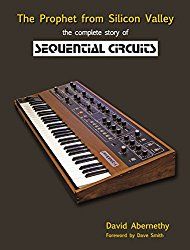
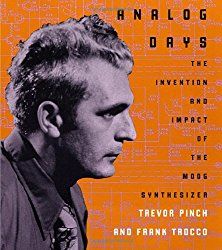
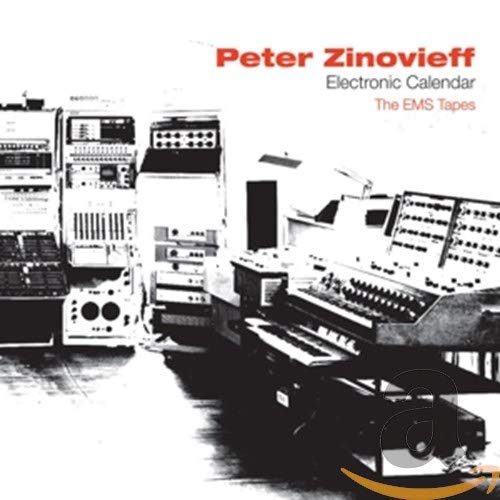
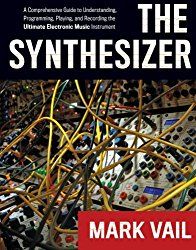
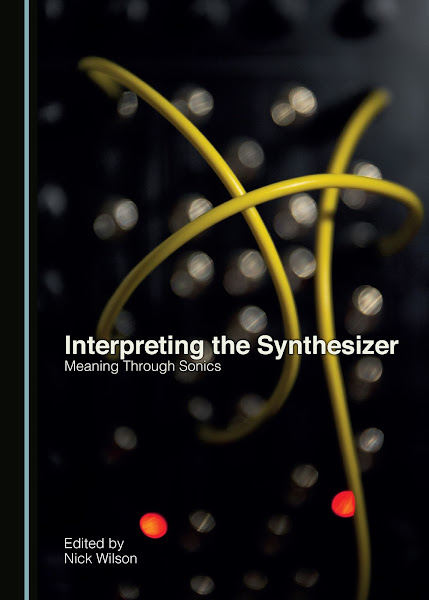
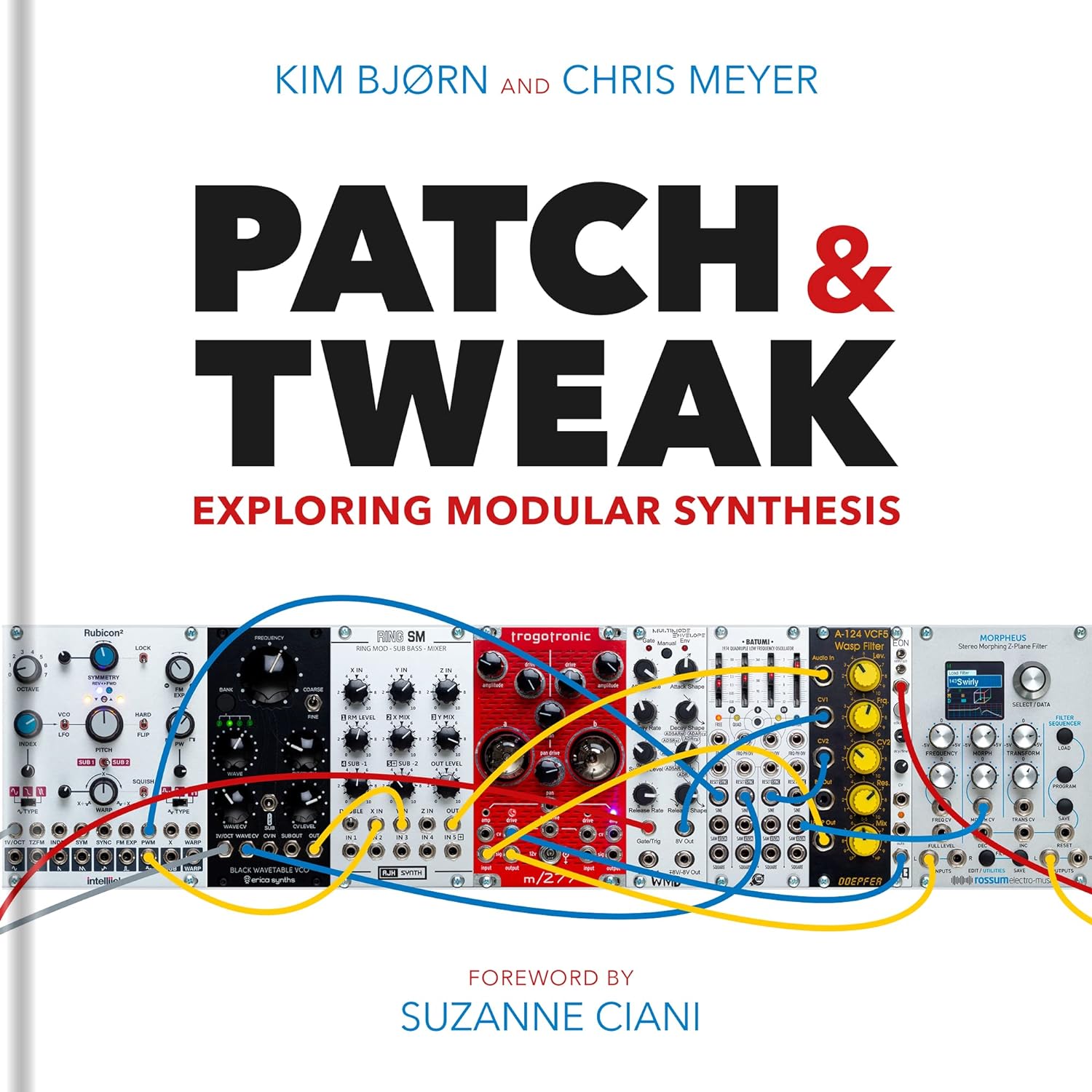

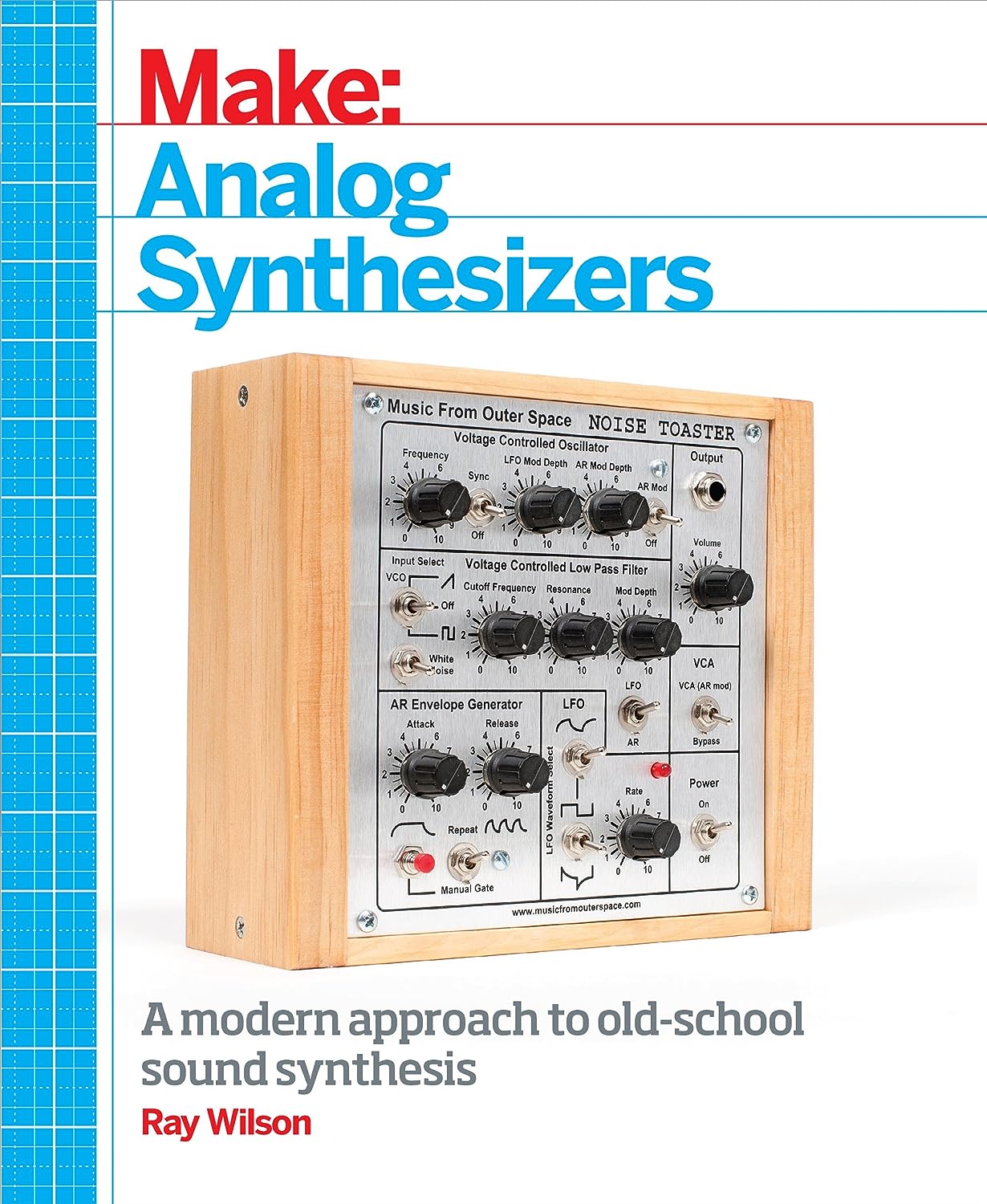
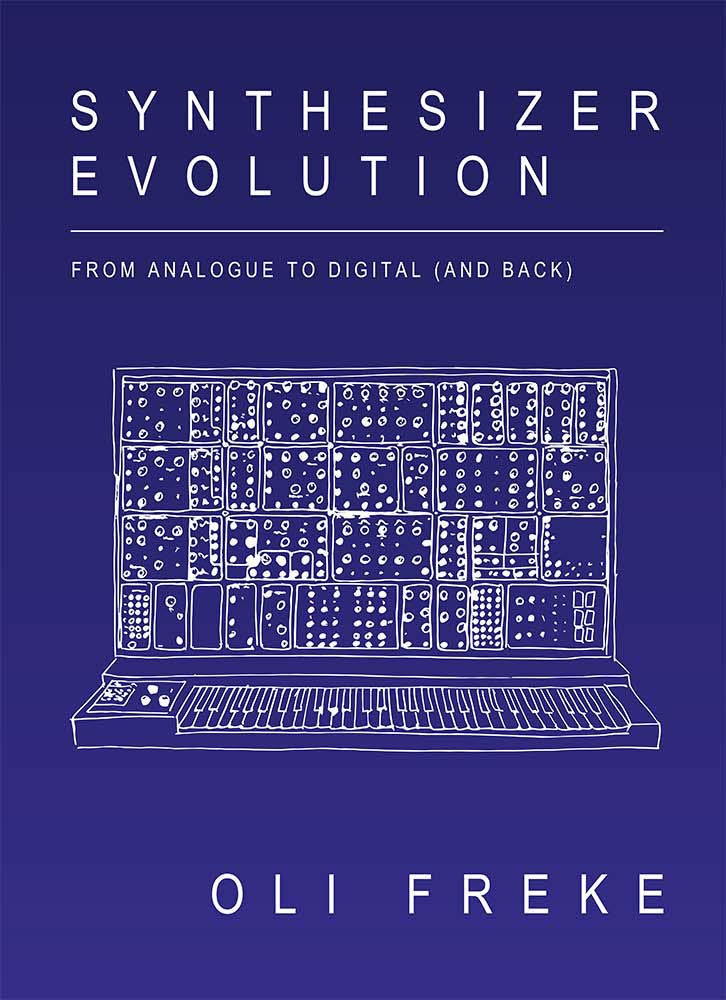
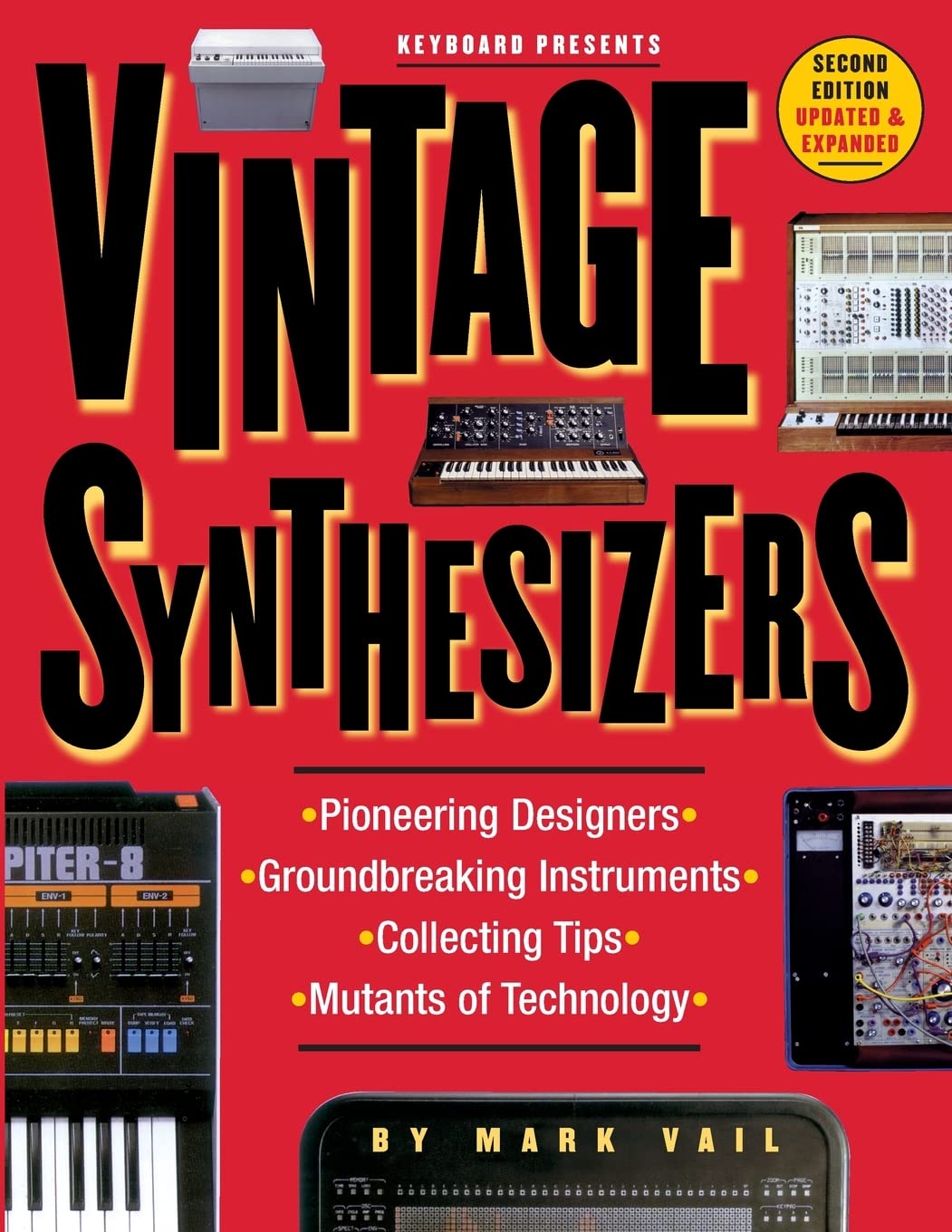
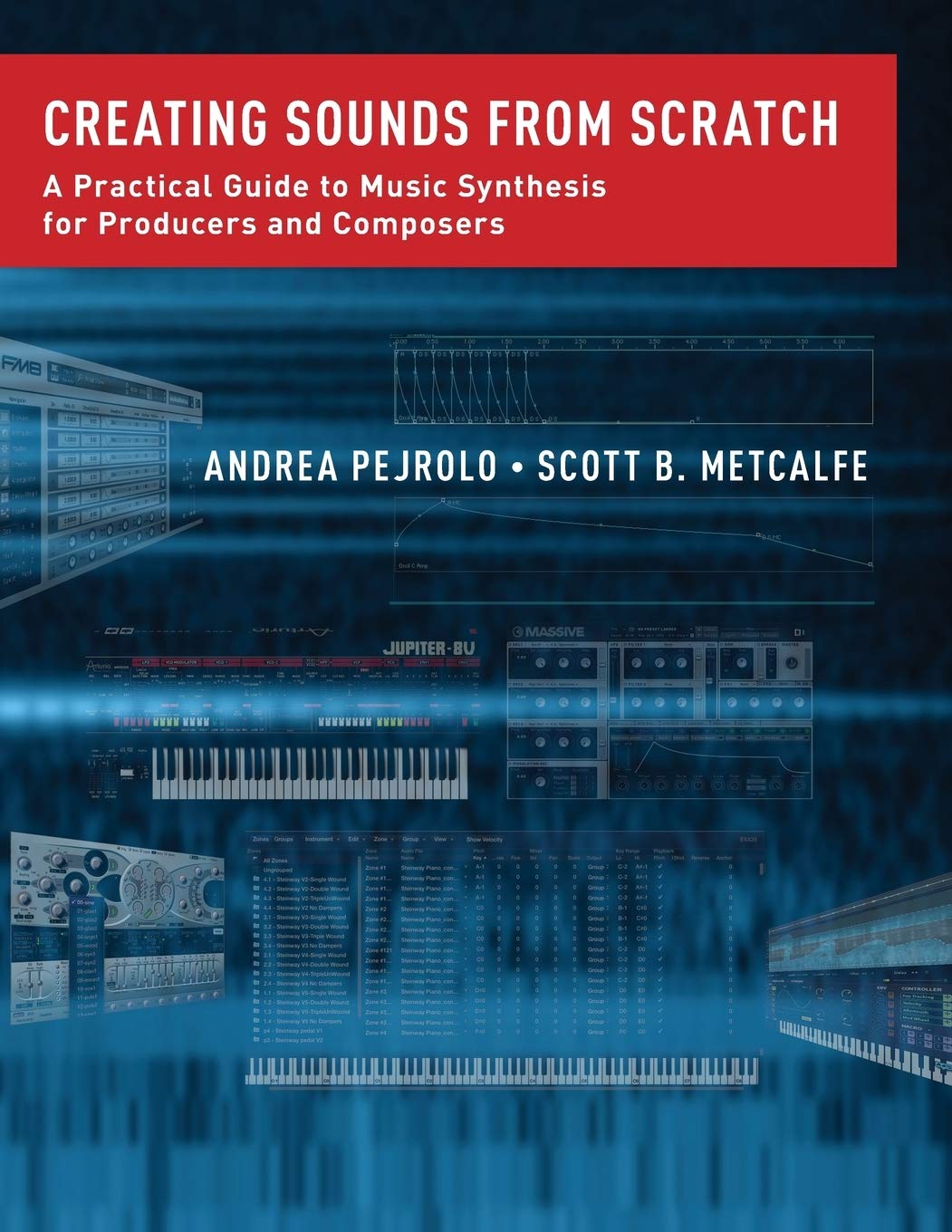
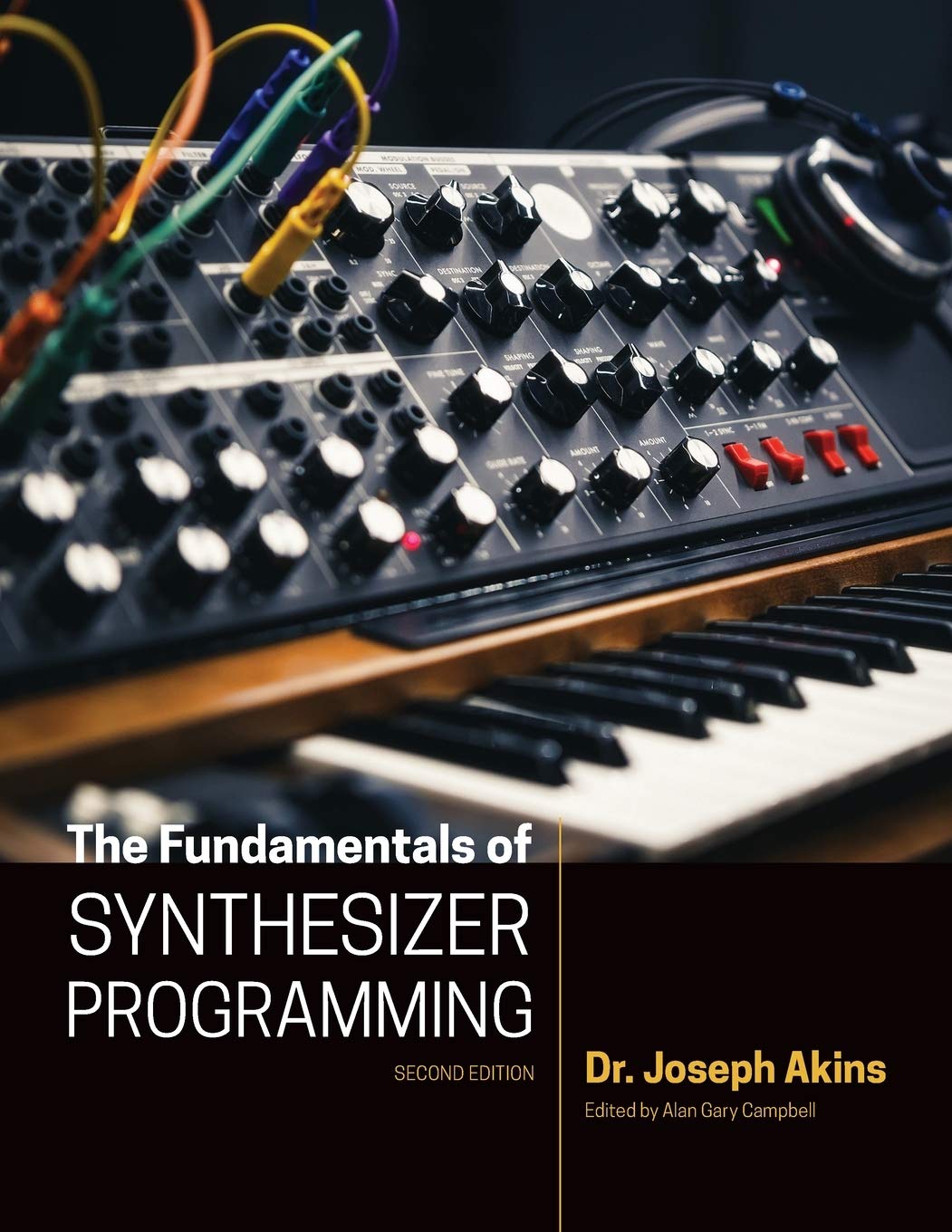

© Matrixsynth - All posts are presented here for informative, historical and educative purposes as applicable within fair use.
MATRIXSYNTH is supported by affiliate links that use cookies to track clickthroughs and sales. See the privacy policy for details.
MATRIXSYNTH - EVERYTHING SYNTH













© Matrixsynth - All posts are presented here for informative, historical and educative purposes as applicable within fair use.
MATRIXSYNTH is supported by affiliate links that use cookies to track clickthroughs and sales. See the privacy policy for details.
MATRIXSYNTH - EVERYTHING SYNTH




















